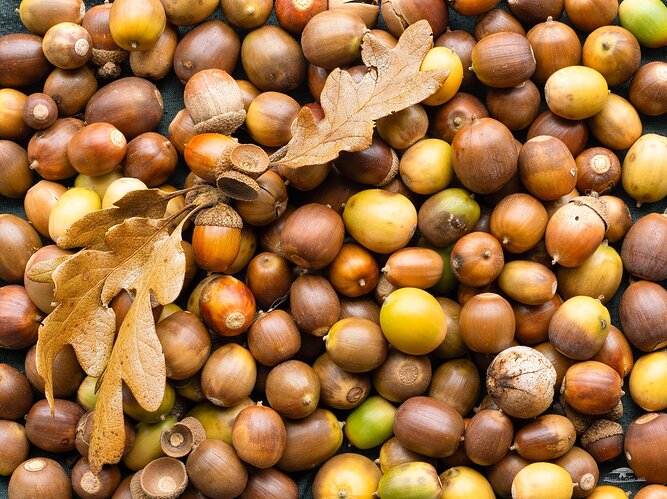Highlights reduced via several combined methods including the Nik polarizer.
Original:
Critique Style Requested: Standard
The photographer is looking for generalized feedback about the aesthetic and technical qualities of their image.
Description
Where I live the only oak species is Garry Oak, also known as Oregon White Oak (Quercus garryana). It does not set acorns at all regularly though some stands are more reliable than others. People were speculating that this might be a bumper crop months ago and it has fulfilled that hope. My wife and I spent some time collecting some to throw out in a couple of areas that need them and I thought a bunch of them might be worth a picture. These were spread on an old green bandanna on our back porch for photographing.
Specific Feedback
I know this is very busy and I tried to make the leaves with attached acorns stand out a bit to become a focal point. Did I succeed? Any suggestions.
Technical Details
Sony A7Riv, FE 70-200 f4 macro @ 70 mm, tripod with ball head, 2 sec timer, 6 image stack @ f/20, 1/10, iso 1000. Processed in LR & PS CC. Cropped to match the container lid I had under the bandanna to contain the acorns.

